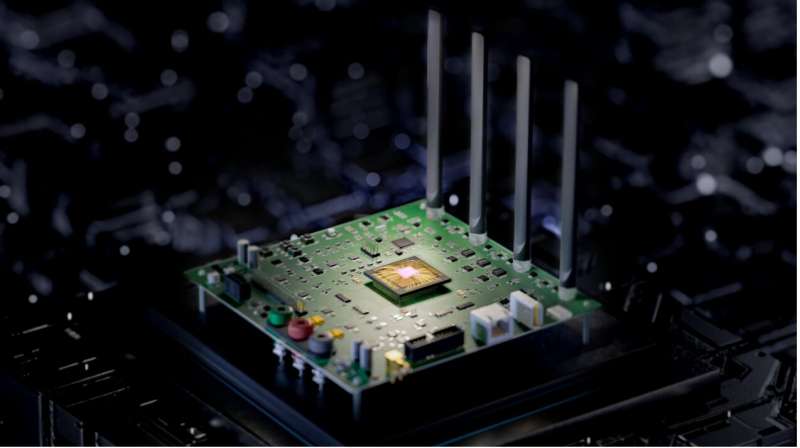A new approach to realize parallel in-memory wireless computing
Advanced communication technologies, such as the fifth generation (5G) mobile network and the internet of things (IoT) can greatly benefit from devices that can support wireless communications while consuming a minimum amount of power. As most existing devices have separate components to perform computations and transmit data, reducing their energy consumption can be challenging.
Researchers at Nanjing University, Southeast University and Purple Mountain Laboratories in China recently devised a parallel in-memory wireless computing scheme that performs computations and wireless transmission concurrently on the same hardware. This design, introduced in Nature Electronics, is based on the use of mermristive crossbar arrays, grid-like structures containing memristors, electrical components that can both process and store data.
“In one of our previous works published in Nature Nanotechnology, we proposed the realization of massively parallel in-memory computing by using continuous-time data representation in a nanoscale crossbar array,” Shi-Jun Liang, one of the researchers who carried out the recent study, told Tech Xplore.
“In this past paper, we demonstrated that the processed analog signals can be transmitted via RF module. Inspired by our findings, we started to think about whether it is possible to exploit the in-memory computing based on memristive crossbar array to realize parallel digital data transmission in an ultralow power consumption manner, which is desirable for intelligent internet of things or other edge computing devices.”
The in-memory wireless computing approach introduced by Liang, Feng Miao and their colleagues utilizes the analog in-memory computing capabilities of memristors to also process analog wireless signals that are transmitted or received by a device. This could greatly improve the energy efficiency of devices, smoothening the sharp separation between the digital and analog domain that characterizes most current technology designs.
“The unique characteristics of this computing paradigm is that the wireless signals carrying information can be processed (e.g., modulated or demodulated) in the path of data transmission in real-time and while consuming a low amount of power,” Liang explained.
“First, this approach can reduce demand for ADC (analog-to-digital converter) used in wireless communication systems, and drastically boost energy efficiency of real-time wireless digital communication. Our study also identifies a promising application scenario for the memristive devices, practical application of which has been limited by the noise associated with conduction state variation.”
The researchers created a prototype system based on their proposed design and then evaluated its performance in a series of tests. They found that it transmits a binary stream of 480 bits with a highly promising bit error rate of 0/480. Moreover, their device consumes significantly (i.e., approximately two orders of magnitude) less power than conventional devices based on digital-to-analog and analog-to-digital converters.
In the future, the parallel in-memory wireless computing approach introduced by Liang, Miao and their colleagues could enable the development of electronics that consume less energy and are better equipped to meet high computational demands. While the team have so far tested their design to create electronics, it could also potentially be applied to acoustic and optical wireless communication devices.
“Utilizing the memristive devices into the wireless communication, where the precise computing is not required, offers a great opportunity for analog in-memory computing technology,” Miao added. “In near future, we plan to work on the large-scale integration of memristive crossbar array into wireless communication system and push it toward real-world application.”
More information:
Cong Wang et al, Parallel in-memory wireless computing, Nature Electronics (2023). DOI: 10.1038/s41928-023-00965-5
© 2023 Science X Network
Citation:
A new approach to realize parallel in-memory wireless computing (2023, June 1)
retrieved 2 June 2023
from https://techxplore.com/news/2023-05-approach-parallel-in-memory-wireless.html
This document is subject to copyright. Apart from any fair dealing for the purpose of private study or research, no
part may be reproduced without the written permission. The content is provided for information purposes only.

Comments are closed